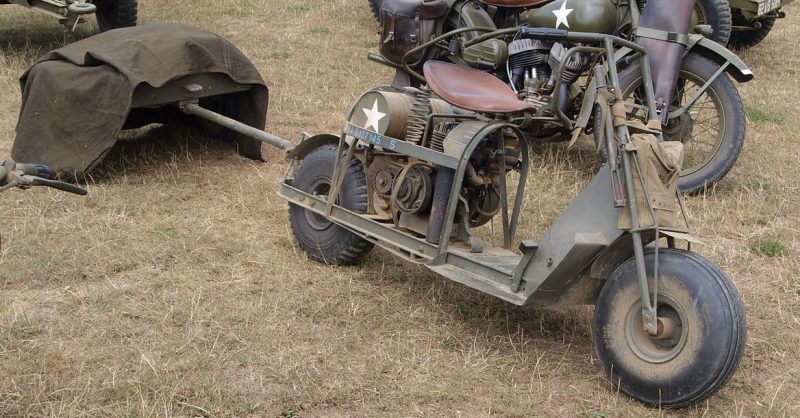When the US joined World War II, Nebraska towns began looking for military contracts, sponsoring bond drives and recycling and scrap drives as they looked for ways to help the war effort.
Lincoln, Nebraska, was no different. The Nebraska Advertising Commission pledged $50,000 to bring wartime industry to the state. Lincoln lobbied at government level to bring industry to their town.
In 1940, Lincoln was considered as a possible location for the Martin Bomber plant that ended up in Omaha because Martin would hire no more than 3% of the people in the town and Lincoln was too small.
There was some industry that was located in Lincoln. Elactic Stop-Nut Co., Goodyear and Western Electric all set up shop in that time frame. There were existing industries, like Burlington Railroad, National Manufacturing and Cushman Motor Works.
Of particular interest was the Cushman plant. They had begun making scooters in 1936, so they were well-established when the Army began looking for supplements to cars and trucks.
Scooters were small, light, quiet and maneuverable. Cushman got the contract and engineers in the Lincoln plant immediately went to work. With so much of the male population serving overseas, women were hired at $0.43 an hour for jobs that men made $0.53 an hour to do.
The Cushman Airborne, model 53, known as the Parascooter, was a one-cylinder, kick-started, 4.6-horsepower, gasoline motor with roller bearing crankshaft, two-speed gear box, and magneto ignition. Top speed was 40 mph. It could handle a 25% grade and could carry a 250-pound load. The Model 53 could travel 100 miles on a full tank of just over one gallon of gas. It used pneumatic tires that were the same size as those on airplanes so that they could be interchanged. A rear hitch enabled the scooter to tow full-sized cars and trucks in low gear.
Since the scooters were intended to be dropped by parachute, a good deal of testing went into making sure they would survive the drop, either in a crate or via parachute hooks on the frame of the scooter.
Besides the Airborne, Cushman also made the Models 32, 34 (which had a sidecar), 39 (which had three wheels), and an adapter that allowed the Model 53 to carry a 50-caliber machinegun. In the end, Cushman supplied the military with nearly 15,000 scooters. The 101st and 82nd Airborne divisions airdropped Model 53s into France after D-Day. Many were abandoned there after the war.
Cushman also provided bomb casings, bomb fuses, aircraft propeller weights, and nose fuses. They were one of the three largest producers during the war.
Cushman was the only manufacturer to be allowed to sell motorized vehicles to civilians during the war because they were considered energy-savers, Journalstar reported.
After the war, Cushman came out with the Model 53-A – a more comfortable version of the Airborne for civilians, but it wasn’t as successful as they had hoped.
Cushman became very successful with their Eagle, Post Office, golf and commercial delivery scooters. Eventually, they sold to Outboard Marine Co. in 1957.
In 2013, a reconditioned Airborne Model 53 sold for $7000 at an auction. Today, nearly all of the 15-acre Cushman site and the 250,000 sq ft plant have been razed to make room for parking at the University of Nebraska-Lincoln.
